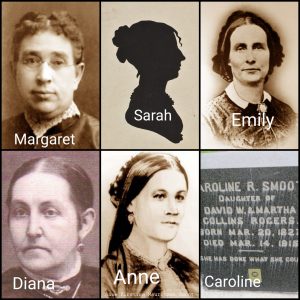
Four years ago in the fall of 2015, I attended the BYU Homecoming Spectacular featuring David Archuleta (who is not important to this story at all, but he was adorable and my favorite part of the night). As part of the evening’s events they honored a man named Abraham Owen Smoot, an important figure in church history and especially that of BYU (which he personally funded in a time of the institution’s financial crisis and consequently died penniless). His great great great great (I forgot how many greats) granddaughter is a singer and performed as well, right alongside the adorable David (and she was very good, too). Recently a news story was published questioning the wisdom of honoring this man so much without ever mentioning his complete life story – which includes the fact that he owned multiple slaves, was a vocal proponent of keeping slavery legal, and very instrumental in perpetuating the priesthood and temple ban on black members and making slavery legal in Utah. As a missionary he was asked to distribute literature for Joseph Smith’s presidential campaign in 1844, but wouldn’t because it was critical of slavery (yay, Joseph!).
One of his slaves named Tom was a particularly interesting situation, because this black man was also a baptized member of The Church of Jesus Christ of Latter-day Saints. Not only was Abraham Smoot his slave master, he was also his bishop. It boggles the modern mind.
Luckily in 2019 we have figured out that hey, owning other people is WRONG. We can look back at his active campaigning to continue slavery and acknowledge that he was gravely mistaken. (And I suspect that Brother Smoot would agree and look with regret on those actions now if given the chance.) People are discussing what to do with his memory as this knowledge becomes more public. We don’t have to torch the campus building named after him, but you know, maybe we could put a plaque out front acknowledging the names of the slaves he owned who also dedicated their lives (against their will) to Smoot’s work, freeing him up to run the academy that later became BYU. I think this sounds totally reasonable. Let’s take ownership of the university savior’s history and mistakes, and honor those who have been erased from the story.
I didn’t know that Smoot was a slave owner at the Homecoming Spectacular in 2015, and yet I was deeply bothered by the evening dedicated to his honor for an entirely different reason. I had been intensely learning all about polygamy during the 12 months prior to this (from Joseph Smith’s polygamy up to modern day practices). In between performances by BYU groups they played a video montage of Abraham Smoot’s life, talking about his great faith and fortitude, and the trust placed in him by prophets such as Joseph Smith, Wilford Woodruff, and Brigham Young. The music to the video suddenly stopped after the short bio of his life and mentioned his wife for the very first time. It said that she didn’t like the desert they’d moved to, and that she “complained” about their circumstances. I rolled my eyes internally about the way she was described compared to him, because come on – all she did was complain, and he NEVER complained about anything? That seemed a little simplistic.
At another point in the video it quoted a letter he’d written to his wife. At the second mention of her, I decided to Google “Abraham Owen Smoot polygamy”, right there on my phone (we were on the very back row of the side section, so no one would’ve seen me). Turns out he had SIX wives, and 27 kids. Suddenly his first wife’s complaints make a lot of sense. Your husband brings you to the desert where you hardly have any food and your starving kids scavenge outside after dinner for anything else they can find to eat, while your husband gives all of your money to the school that would become BYU, goes away on missions, and when he’s around he still has multiple other women to spend time with and impregnate. *He* didn’t just die penniless to save BYU, so did all of his wives and their children. Abraham Owen Smoot was heavily in debt when he passed away, so I assume that financial burden passed on to his living wives. But who gets a Homecoming Spectacular with the adorable David Archuleta in his honor, and who doesn’t even get mentioned or named? Not his six wives, only him. If my children and I ever live alone and starve on the frontier so that future generations can have the option for quality, affordable education, I’d really appreciate them singing a song in my honor at some point, dang it.
David and the great great granddaughter were talking about how nothing they did tonight could have happened without Abraham – not the homecoming weekend, the Marriott Center, the performances, the school, nothing. I wondered what it would be like to be say, his 5th invisible and unnamed wife who spent most of her time raising kids alone while her husband spent time with the other wives or with the prophets, funneling all of their money into an institution of higher learning rather than his family.
I graduated from BYU. This guy impacted my life. But what about his wives? What about the supposed “equal” role that we women play in marriages and history? Why could they not even mention 5/6 of his wives, and only mention how the other one complained?
Long after everyone else in the audience had clapped and moved on to ballroom dance performances and the Jazz Band, I was still sitting there, fuming a little on behalf of the stories I knew were being ignored in order to promote a more whitewashed version of the polygamist man who saved our university. (Who might’ve been a genuinely swell guy (outside of his racism), but come on! It was too convenient that only one wife was even mentioned. Own up to your polygamous roots, BYU.)
Not only did Abraham Smoot do what he did with the help of enslaved blacks, he did it with the help of six women also largely missing from the public story. All of these people made BYU possible today! Let’s have a concert and honor all of them for once too, and stop erasing women’s contributions to our church by only praising the men they were associated with.
(And hey, maybe name a few buildings at BYU after some faithful pioneer woman for a change. Below are some suggestions.)
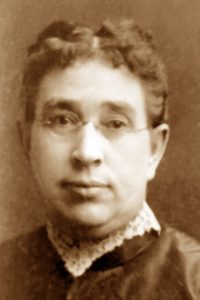

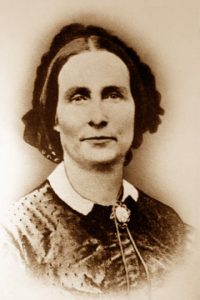
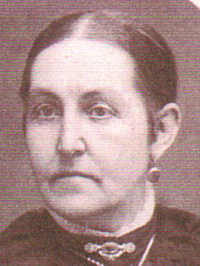
“Thou art the mother of many children.
Thy labors have been great in Zion.
Thou wilt stand in thy lot in the family organization in the Celestial World.
Wilford Woodruff”
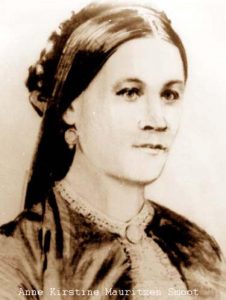
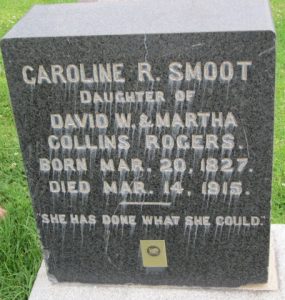
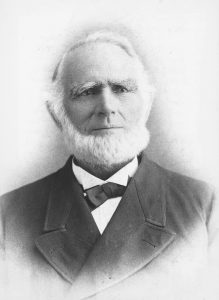




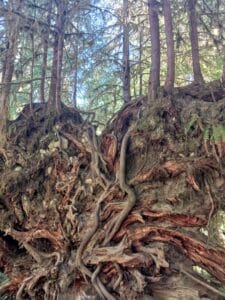

38 Responses
Thank you! On behalf of Margaret, Sarah, Emily, Diana, Anne, and Caroline, this was very refreshing and needed.
I really liked learning something about all of these women (despite how little was available online). When I went to the Homecoming Spectacular 4 years ago I didn’t even look anything up about them, I was just bothered that they existed and were ignored. It meant a lot more to see some of their faces and learn a little about them.
What did you learn Abby about the wives? I am a grand daughter to Margaret T. Smoot. I wish I could share her with you. She was a woman like no other. All the wives of Abraham loved her and cherished her. She reached out to all, included everyone of the wives and the children as her own. Your assumptions in your article are not correct. We all put our own slants on articles about people we don’t know and you assumed things that were not true, Just found this today.
Hi Julie! I don’t disagree at all that I don’t know much about the wives of Abraham Smoot. I spent a few hours learning everything I could find publicly available about them online from newspaper articles and websites commemorating Abraham Owen Smoot. I couldn’t even find photos of them all or much more than a nugget or two in the details about their lives.
I understand that those descended from this family has a lot of information at their fingertips about these wives – but as an outsider who graduated from BYU and wanted to learn about them, I could find almost nothing. I read enough about Abraham Owen to fill a book, but everything I could learn about all six of his wives combined probably filled half a page.
I guess my point wasn’t that I am an expert on these women – my point was that I WANTED to learn about them, but they’re almost erased from the public story and all I could find was information about their husband. I want to honor their sacrifices and know about their life stories, but history hasn’t traditionally told the stories of women like they do men. That’s what I want to change – I don’t want the women and their sacrifices to be overlooked and forgotten.
If a descendant of the Smoot wives ever wants to write a history of one of them and their contributions to the founding of the university, we would LOVE to publish something like that as a guest post on the blog.
Great article. The story of one family that represents the Mormon cosmology that we all live in. Thank you!
It does! From the historical wives of church presidents to Heavenly Mother, we tend to speak often of the public male partner in the relationship and don’t even expect to learn anything about the wife – even though she is there every step of the way too.
Such a good essay and so much I, as a grateful BYU student, did not know. Thanks for your insight.
Agreed (as a fellow BYU graduate).
To be fair, I also didn’t know anything about Abraham Owen Smoot until four years ago – but once you go looking online for him there’s a TON of info. Information on his six wives however, was very hard to come by. It was a real hunt!
This is important work. Thank you.
Very important work, indeed. Thank you.
Such great points. I hope this post gets the attention of the programming party planners at BYU, because this seems like such a blatant act of misogyny and erasure that it would be a no-brainer to do things differently.
You know, I wrote a letter to the editor and sent it to BYU’s Daily Universe (as well as several other papers), and… crickets. Never heard back! I was sad. My bucket list item of getting a letter published in the Daily Universe remains unchecked.
Thank you for this.
Thank you for this post. This is exactly what Laurel Thatcher Ulrich meant when she said “well-behaved women seldom make history”, because these women did not have the public, ‘high-profile’ callings that lead to historical recognition, but their presence and contributions were still vital.
And yet, they did have some of the most visible and noteworthy callings that a woman in the church can have – Margaret as stake relief society president and Anne as stake primary president. Their church callings were about as public and high profile as a woman can have – but their husband was the stake president and bishop, so his church work is memorialized and theirs is lost to history. Women’s church callings are rarely remembered – nobody has ever made a RS/priesthood manual called “Teachings of General Relief Society Presidents”, for example.
Men’s teachings echo in our classes and meetings for decades and generations, and women’s teachings disappear into the grave with them. I wish we had sermons taught by Margaret Smoot, not just her husband. 🙁
If you know where to look, A. O. Smoot’s wives are not lost to history. By the way, your picture of Margaret is not Margaret. It is one of A.O. Smoot’s daughters by his wife Emily.
I’ve been researching my family history and wondering about these women. Luckily, in one case, I know a lot about my GGGG grandmother because her husband died at Winter Quarters and she had to cross the plains alone with eight kids.
Now for another question… was BYU built by slaves?
Brigham Young Academy, precursor to BYU, was started in the 1870’s so it’s unlikely that it would have had any direct connection to slavery.
I think there’s an argument to be made that BYU probably would have been built partly by slaves if the practice hadn’t been outlawed when it was. AO Smoot and Brigham Young were strong supporters of slavery, and Utah made the choice to be a slave territory when it could’ve been a non-slave territory. If BYU had been founded just a couple decades earlier than it was (just like Harvard, Princeton and Georgetown), I think it probably would’ve had a much stronger link to slavery than it does, simply because the founders would have been allowed to build it that way.
It’s an interesting “what if” idea to consider. I really know nothing about the history of slavery in the Utah territory but I suppose if someone who does know about that history would comment on what public or private works were constructed in Utah with slave labor prior to the emancipation then we could better extrapolate the probably of slave labor being used for the building of BYA had it been founded a couple of decades earlier.
Dear DB, as a direct descendant of AO Smoot, I regret to inform you that slavery did not end in Utah Territory in 1865 as it did in the rest of the country, largely due to the actions of AO Smoot and other high-ranking Mormons who came from the South (AO was born in Kentucky, part of the Southern Confederacy.) AO owned three slaves, as this article stated and had he not owned these three slaves and derived great work from them, who knows if AO would have had the financial means to have contributed as much as he did to BY Academy? Owning slaves, as well as having plural wives, allows a man a much great sense of ease, going through life, and he has lots of help that he doesn’t have to pay, because he owns these people (and yes, wives were and still are in some parts of society, owned, chattel property of the husband, along with their children.) Who knows if my great grandfather Reed Smoot (b. 1862) from AO’s 5th wife, Anne Kirsten, would have been born if AO hadn’t benefited from having unpaid labor that allowed him to make 13 round trips across the plains and devote his life to the Church?
Thanks so much for this. I am intrigued by your observations about an often overlooked reality: that plenty of early Mormons participated in not one, but both of the twin relics of barbarism. Many converts from the pre-civil war south (including some of my own ancestors) would have come from communities and families where slavery was status quo. Slaves were considered property, and so were women. It doesn’t take a lot of imagination to see how easy it would have been to use polygamy to augment (and eventually replace) slavery in Utah territory. Where slavery was often referred to as the “peculiar” practice upon which an entire social and economic system was based, and Mormons became known as a “peculiar” people. Coincidence?
Love this post! I think it is so important to remember the women and in this case, enslaved people, who made the work of the men we more often choose to remember possible.
The picture you have of Margaret Thompson McMeans is wrong. You have a picture of Margaret Thompson Smoot the third child of Abraham Smoot and Emily Hill. You also did not list Hannah Caroline Rodgers Daniels Smoot. She married Abraham in March 1886. There are several good histories of her on FamiySearch.
Aaah, thank you for catching that about Margaret! Honestly, I tried so hard and it was nearly impossible to put together the puzzle pieces from what’s available online. I found two different photos of a Margaret Smoot and saved both, finally deciding they were just the same woman at different ages. This one popped up most frequently, and was included in an 8 article series in the Dailey Herald in the chapter that covered his wives (but it was unlabeled). Even trying so hard, that I could mix up the photo, further shows how little is available for the average person learning about this family.
But I did cover Hannah (Caroline). She’s not missing. Her gravestone is the sixth image in the main photo, and she’s the last wife listed right above Abraham in the list of photos at the end.
Your post reminded me of my experience at the BYU Homecoming Spectacular in 2014. I began with great hopes of being entertained, and ended fuming. My overall impression was that it was a man-fest. For example, two male alumni were the guests of honor. The music and dance performances were either co-ed (with plenty of male leads and female sidekicks), or all-male (including the Men’s Chorus, but no Women’s Chorus). Three of the featured music presentations were: 1) I’m Looking at the Man in the Mirror, 2) The Brotherhood of Man, and 3) Go My Son, Get an Education. Any one of those songs would not have caught my attention–but all three? And nothing about women? There was even a situation where a male music director was literally spotlighted during the applause, in contrast with the female director of another song who stood in the dark during the applause. After the show, I wrote letters of concern to several of the BYU faculty in charge of the production. Like you, I did not receive any reply. I hope in the future that BYU will consciously pursue more enlightened production values for their Homecoming Spectacular, as befitting a modern co-ed institution. If they’re taking their cues from General Conference, we’ll be waiting for awhile.
Oh, geez! Now it’s a trend. Should someone go this fall and report back if 2019 is finally better?
I enjoyed reading this article. Will you please list your sources here as I like to read from primary sources as much as possible.
Please don’t be disappointed in my scholarship when I tell you that my sources are “everything I could find on the internet with 3 hours of google searches on variations of the theme ‘Abraham Owen Smoot and his wives’.” 🙂 I certainly didn’t intend this blog post to be scholarly, just my experience as a regular person who graduated from BYU trying to learn more about its history with articles available online. There was an 8 part series in the Daily Herald a few years ago, written by people that are part of the A.O. Smoot Family Organization that I’d recommend. The first chapter is here: https://www.heraldextra.com/news/local/central/provo/a-o-smoot-chapter/article_a57a81c5-ebdd-5155-a89a-f48c185a925e.html
They have sources from BYU Special Collections and books that his ancestors have written. You can probably find more primary source materials by following up after them and their books. Good luck! Tell us anything interesting you learn.
Thank you for this article. As a descendant of A.O. Smoot and his 5th wife Anne, I probably have had a little more exposure to info on the wives than most. However, I always wished to know more. I’ve read a short diary Anne kept that is sadly devoid of detail and a brief history, I think written by her son Reed. The Smoot family has put together a book that I’ve seen available on Amazon. The book is fairly whitewashed, but does have quite a bit of info about all of his wives.
I also am a descendant of AO Smoot and his 5th wife, Anne! I see this post is from 2020 and hope this still reaches you.
Reed Smoot was my great grandfather.
Would love to hear from you.
Hi Susan, I’m descended from AO Smoot and Anne, AND I’m also a great granddaughter of Reed Smoot (through his first born, Harold Reed Smoot, my grandfather.) That makes us 3rd cousins *I think*. I’ve met lots of my cousins since 2015, when I attended the BYU reunion that honored our great-great grandfather, AO. I wasn’t raised in the faith and would not join now (I’m 63 years old) but it’s interesting to see how beliefs and ideas are maintained through families even if they’ve never met and weren’t raised together. My email is [email protected] if you’d like to get in touch. I live outside Austin, Texas.
Hi Monique, I’m going through these comments backwards and I see there are several 3rd cousins writing on this thread. I’m descended from AO Smoot and Anne, AND I’m also a great granddaughter of Reed Smoot (through his first born, Harold Reed Smoot, my grandfather.) I’ve met lots of my cousins since 2015, when I attended the BYU reunion that honored our great-great grandfather, AO. I wasn’t raised in the faith and would not join now (I’m 63 years old) but it’s interesting to see how beliefs and ideas are maintained through families even if they’ve never met and weren’t raised together. My email is [email protected] if you’d like to get in touch. I live outside Austin, Texas.
There was so much left out of this article. I am a descendant of A.O. Smoot and his 1st wife. She was a woman loved by all other wives, and children. There was so much information that was guessed at and not founded in this article. Wish the author would have done a little research in family, rather than on the internet.
Thank you for this article! I am currently working on Smoot’s page on Wikipedia and, while his wives may not reach the site’s “notability” criteria to have their own pages (I’ll research this more, but I’ve run into similar situations before that didn’t turn out how I’d hoped) I’m working on including more information about Margaret, Sarah, Emily, Diana, Anne, and Hannah on his page. If none of them qualify for their own Wikipedia pages, I’ll continue to highlight Mormon women such as them on my own site!
Very interesting information!!! I loved the way you put it. It gave amazing information of Smoot’s wives. Also, I am proud to say that Diana Caroline Tanner Eldredge Smoot, is my great x6, grandmother. I have a diary of her passed down from my dad. And it talks about how her brother was sick when the second group of pioneers, (the women and children) were heading down immigration canyon. And she was the one to lead all the covered wagons down it.
Also, she was only 10 years old at this time.
Bravo! As a great-great granddaughter of AO Smoot and his 5th wife, Anna Kirsten Morrison, I am SO PLEASED to see someone mentioning both AO’s slave ownership and the important part all his wives played in his life. As the great-granddaughter of AO and Anna Kirsten’s first child, Reed Smoot, who served as a Republican Senator for 30 years, I have to say that the continuation of Mormon church practices and corresponding social beliefs are practices that lead to only one thing: Patriarchal dominance. In other words, anyone not a “white” (very broadly defined as to be anyone of any race whose skin is lighter than brown) man is a 2nd class citizen.
My great-great grandfather fought very hard and believed quite passionately in the exalted status that “white” men held in the universe and had no qualms about owning any other type of human (i.e., dark skinned of either sex or females and all children) as his chattel property, to do with as he pleased. Now, AO was not a brutal misogynist as so many are today (2024) because he did see that his women and children were clothed, fed and the males educated, with the females educated to the point they could serve the men’s purposes. As much as it shames me being AO’s direct descendant, based upon a review of my father and grandfather and their life principles — both abandoned the Mormon Church in their 20s — they would not see much wrong with men’s exalted role in the universe, above women and children, and certainly dark-skinned people. Like AO, my father and grandfather — both raised within the Mormon Church, with Reed Smoot as their Bishop, as well as their father/grandfather — had no trouble whatsoever assuming the privilege their white skin and penis afforded them. Because of this, patriarchal principles strongly upheld by AO in his lifetime (and I doubt very much he’d be as repentant as you long to hope he would be) were passed down through his children and continue in society today — whether or not the believers in patriarchy are Mormon, or not. Both LDS and gentile men largely agree: they like patriarchy, and wish to continue it.
As for me, the only way I got out of the toxic belief in patriarchy and towards a belief of women’s value as independent and non-sexualized beings, was being raised by my never-Mormon mother who was divorced from my father when I was three and took me and my half-sister to NYC where we were raised and exposed to the concept that women have rights equal to those of men.
Good luck in your life and thank you so much for correcting the record and adding in all six of AO’s wives. Without his wifes, similarly to without his slaves, what would AO Smoot have accomplished? A LOT LESS than he did. I favor renaming Smoot Administration Building to the names of his three slaves. These truly involuntary slaves made a difference in his life and that of his entire family.